The Digi XBee® family just turned 15! That’s a major milestone for any product, but especially in an industry that’s evolving as quickly as the Internet of Things (IoT). XBee modules are small radios that provide the communications between machines, sensors, industrial tanks, drones, trains, medical equipment, cell towers and the millions of other devices at work in the world of connected wireless applications.
Additionally, the mighty XBee module achieved another milestone recently – 15 million XBees deployed worldwide.
.jpg?lang=en-US)
In recognition of Digi XBee's 15th anniversary and success, we’re taking a look back at where XBee has been and highlighting a few of the major milestones in its history.
IoT Before There Was an IoT
When Digi XBee was launched in 2005, XBee was not yet called XBee, and the Internet of Things was not called the “Internet of Things.” Back then, it was machine-to-machine (M2M) communications. The predecessors of XBees were developed by MaxStream Inc., which Digi acquired in 2006, and had names like XStream and XTend and operated in the 900 MHz range using proprietary protocols. These devices were about the size of a credit card.
Digi’s CEO at the time mentioned that he’d heard about the new ZigBee protocol, an open standard for wireless mesh networking. He thought the market was going to be many times bigger than our existing business with long-range 900 MHz radios and that eventually the devices would be about the size of a postage stamp. I thought he was crazy. Our 900 MHz business was doing very well and growing fast. How could a short-range, low-cost 2.4 GHz radio outgrow this business? Needless to say, he was right. Soon after this conversation, we started development on what became Digi XBee.
Fun facts:
- The name “XBee” came from the naming convention we were using at the time, using the letter “X” combined with the “Bee” from ZigBee.
- Something many people aren't aware of is that "XBee" is not synonymous with "wireless radio frequency module." Digi XBee is the brand name of the XBee registered trademark, which is solely owned by Digi International Inc.
Makers Make Their Mark
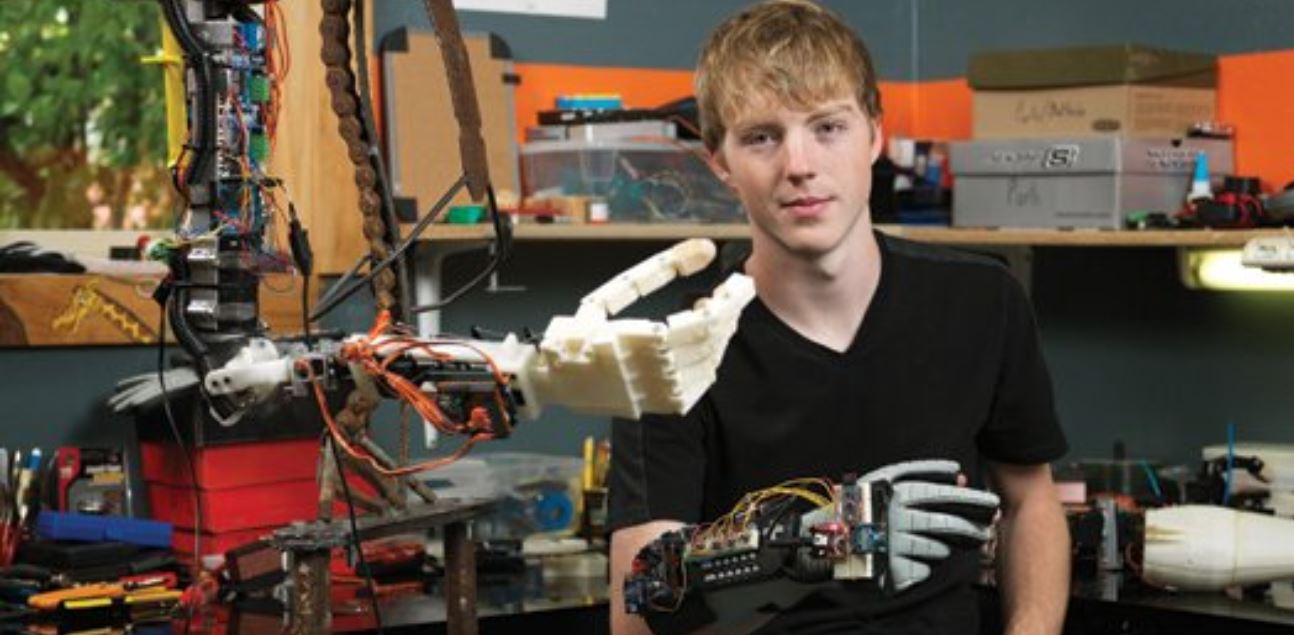
The first Digi XBee modules were primarily used by the Maker community for projects such as do-it-yourself robotics, home automation and inventions such as the
remote controlled robo arm pictured above and the
Omniwheel Robot pictured below. You can see more inventions and innovations from our Maker friends in the
Project Gallery.
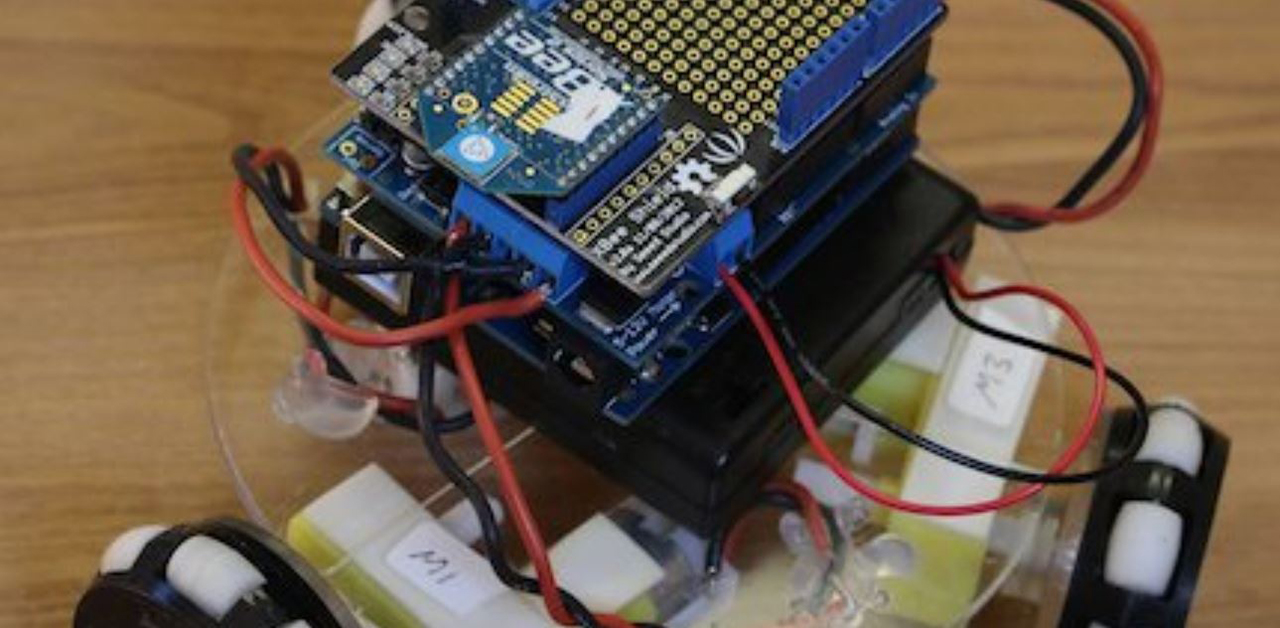
The early XBee models were excellent for these applications. Our development kits were inexpensive, easy to use and highly popular with student teams learning about radio frequency (RF) in wireless design. And they still are! You can see a number of student projects in our Customer Stories, like the
TuFast racing car and the
McGill University Rocket, pictured below in the Use Cases section.
The Maker community contributed significantly to the success of XBee. We introduced XBee to the team at Sparkfun and it was a perfect fit for their business. Sparkfun caters to students, hobbyists, and engineers looking for components for their projects. And while wireless was becoming more popular, many of the products on the market were either too expensive or too difficult to implement. XBee made wireless easy.
Digi XBee bridged the gap by offering an affordable wireless solution that was easy to use, well
documented, and had great tools, great support and an
online forum. Partnering with companies like
Sparkfun as well as our channel partners
Digi-Key and
Mouser (with fast next-day shipping) helped make XBee what it is today.
Many of those early students and Makers went on to incorporate Digi XBee modules into successful commercial products. Then, with the advent of the Industrial IoT, the use cases for Digi XBee wireless modules broadened to include a vast array of industrial and smart city applications.
.jpg?lang=en-US)
The rest, as they say, is history! Here are a few of the milestones along the way.
- The first Digi XBee module, the Series 1, was based on the IEEE 802.15.4 protocol. It was FCC approved in late 2005. This was followed by Series 2, based on Zigbee. Over the years, Digi continued to support these protocols with more advanced versions of the module, including a combination radio and microprocessor in a single package.
- To augment the powerful capabilities of Zigbee, in 2008 Digi developed a proprietary mesh network technology, called DigiMesh®. DigiMesh and Zigbee are complementary protocols in many ways, offering developers two great choices for integrating mesh technology into their designs, each with significant “pros" for various application needs.
- The Digi XBee SX Modem, introduced in 2016, was described as the “muscle car” of the XBee ecosystem. This industrial-grade modem packed a punch with its 1-watt of output power at 900 MHz. It was — and is — the perfect embedded wireless solution for OEMs who need a modem capable of powering through noisy environments and covering extreme distances while not breaking the bank.
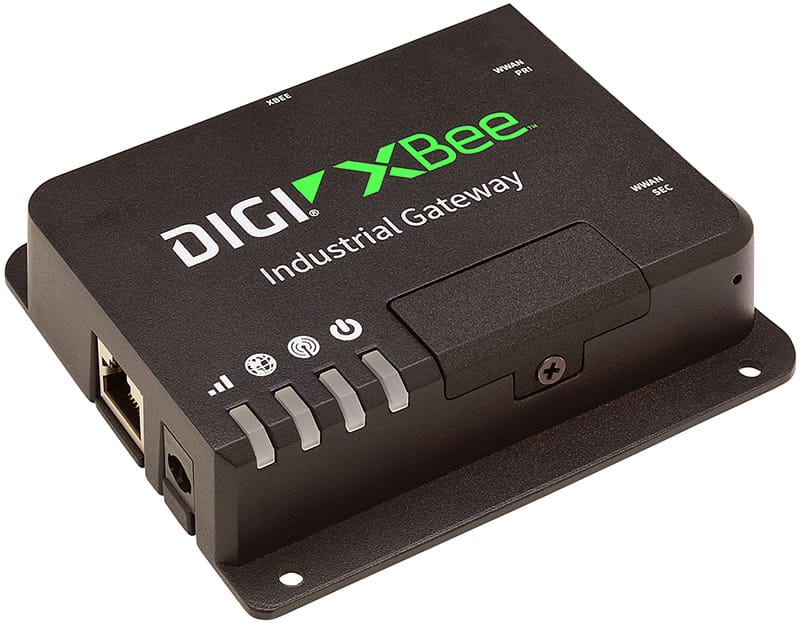 Digi also introduced gateways based on XBee modules, including Digi XBee Gateway and Digi XBee Industrial Gateway, to support product developers with end-to-end connectivity in both indoor and outdoor applications. The gateways connect any number of XBee devices, and offer an open-source Python environment for custom application development as well as out-of-box integration with Digi Remote Manager® for configuration and management of XBee networks.
Digi also introduced gateways based on XBee modules, including Digi XBee Gateway and Digi XBee Industrial Gateway, to support product developers with end-to-end connectivity in both indoor and outdoor applications. The gateways connect any number of XBee devices, and offer an open-source Python environment for custom application development as well as out-of-box integration with Digi Remote Manager® for configuration and management of XBee networks.
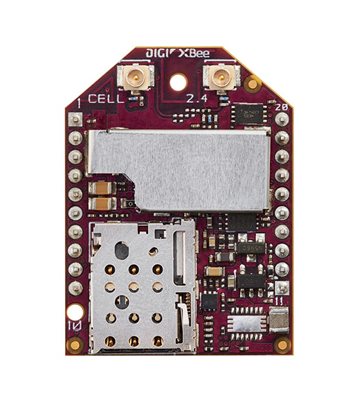 Digi TrustFence®, Bluetooth low energy for local configuration and Micro-python programming capabilities to enable edge computing.
Digi TrustFence®, Bluetooth low energy for local configuration and Micro-python programming capabilities to enable edge computing.- Smart IoT design means selecting the solution that’s right for one specific job, not for every job. That’s why the Digi XBee line, in addition to its high-power, low latency models, includes low-cost, low-power models for deployments where only small amounts of data are transmitted and latency is not critical. For these use cases, Digi XBee 3 Cellular LTE-M/NB-IoT modules feature a power saving mode that extends sleep time and battery life. With this module, Digi simplifies the task of integrating the latest LTE and low-power wide-area (LPWA) technology into a range of IoT devices.
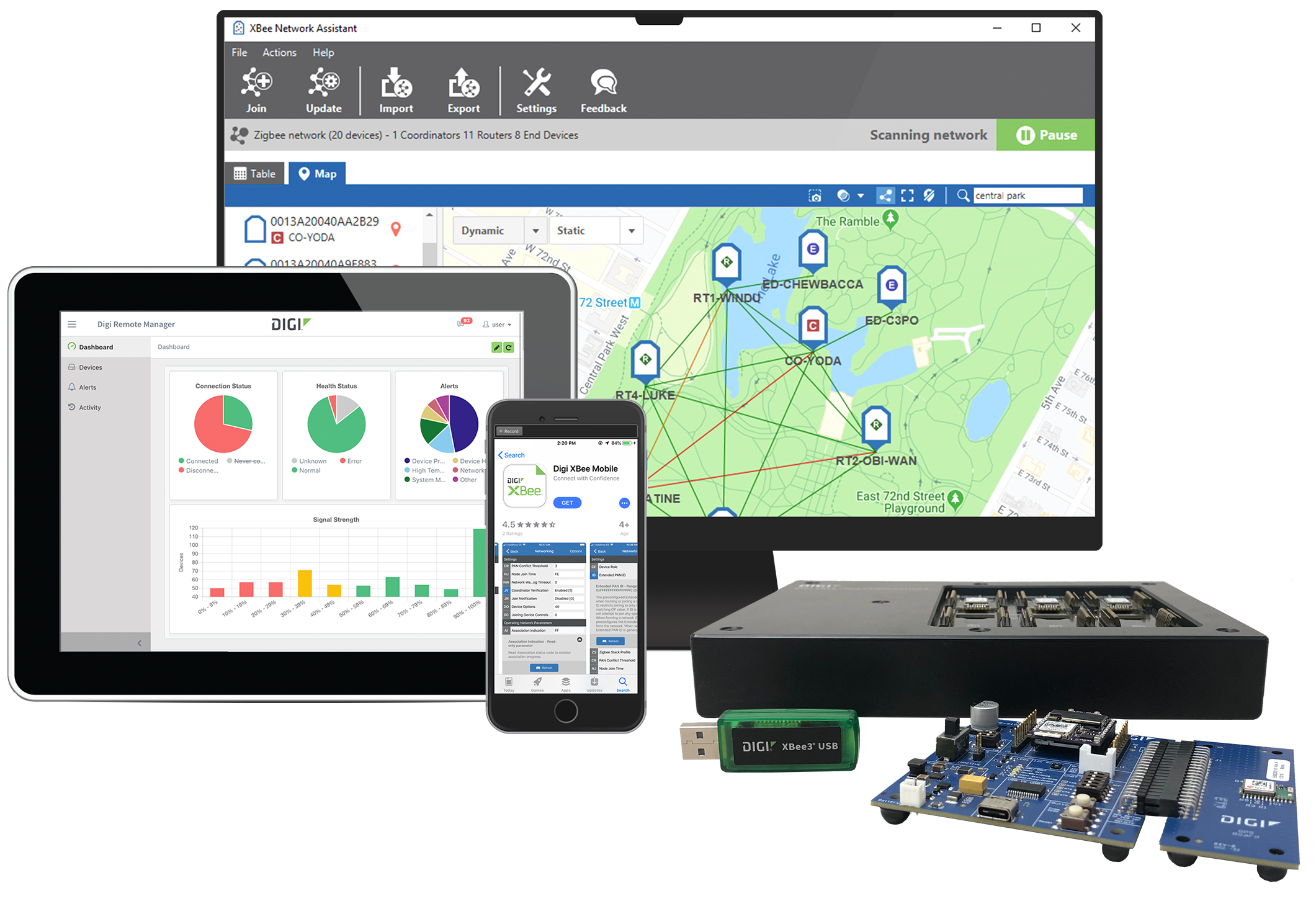 In 2019, Digi announced Digi XBee Tools – an award-winning suite of hardware, software and cloud-based tools designed to support the entire IoT product lifecycle, from prototyping through configuration, manufacturing, deployment and ongoing management. The tool set, which includes 9 supporting products and services, including some free downloads like the Digi XCTU® configuration and test tool, is designed to expedite development, shorten time-to-market, improve the process of monitoring, managing, and updating deployed devices, and reduce friction in the entire lifecycle.
In 2019, Digi announced Digi XBee Tools – an award-winning suite of hardware, software and cloud-based tools designed to support the entire IoT product lifecycle, from prototyping through configuration, manufacturing, deployment and ongoing management. The tool set, which includes 9 supporting products and services, including some free downloads like the Digi XCTU® configuration and test tool, is designed to expedite development, shorten time-to-market, improve the process of monitoring, managing, and updating deployed devices, and reduce friction in the entire lifecycle.
Today the Digi XBee line includes several cellular variants, taking advantage of the newer Cat 1, Cat M and NB–IoT protocols that are ideal for IoT solutions. Consistent pin layout, or “pin compatibility,” means that XBee devices are backward compatible, enabling customers to augment existing installations or swap in newer modules with the same form factor.
Ease of Use Drives Adoption
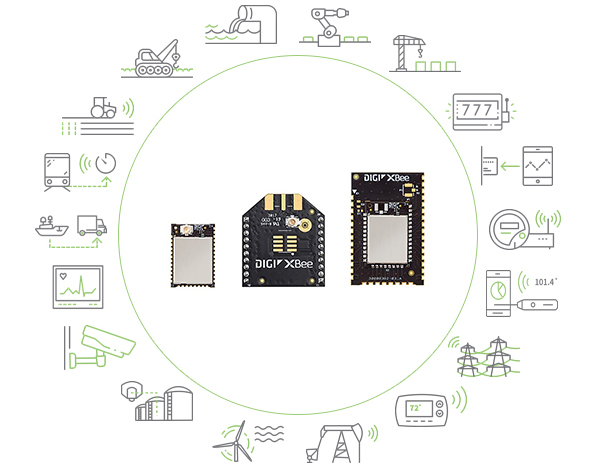
Getting an IoT application from drawing board to market is a complex, multi-step process. So, what started with one product has evolved into an entire
ecosystem of embedded, programmable modules and software tools.
Digi XBee Tools support the full application lifecycle, from initial proof-of-concept to deployment and management of devices on a functioning network.
Digi software development kits (SDKs) include libraries, code examples and documentation to help simplify the developers’ work in creating and deploying applications. For example, the
Digi XBee Mobile SDK is used for building mobile apps in Apple iOS and Android that interact with Digi XBee 3 modules via Bluetooth. Creating a Bluetooth-enabled mobile app involves complex authentication and encryption. Digi XBee Mobile SDK helps expedite the process.
When developers are ready to set up, configure and test an application before deployment in the field, the user-friendly graphical interface of
Digi XCTU makes the process fast and easy. Digi XCTU is compatible with Windows and MacOS, and can graphically represent an entire XBee network.
Finally,
Digi Remote Manager® enables the configuration and management of hundreds or even thousands of XBee devices remotely. This cloud-based application enables network managers to securely monitor and control distributed IoT devices and implement mass firmware and software updates automatically, from virtually anywhere in the world.
Digi XBee Use Cases—From Down-to-Earth to Outer Space
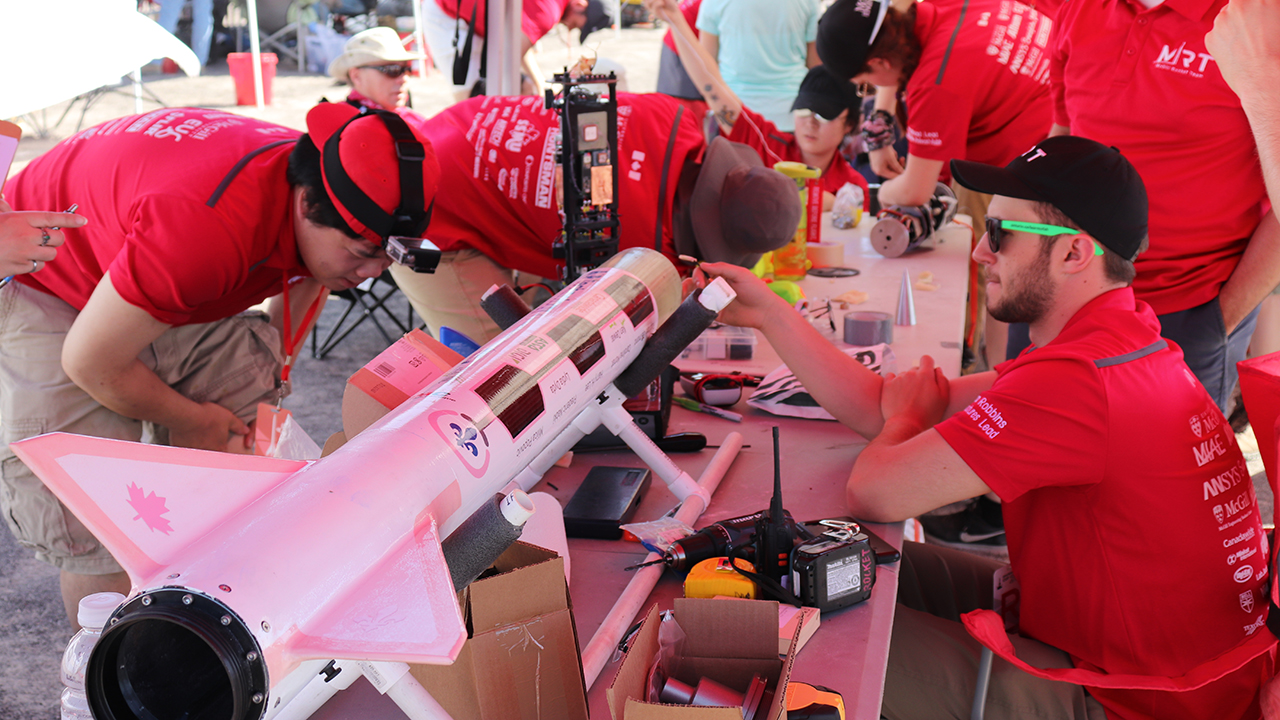
Today, with over 15 million Digi XBee modules deployed worldwide, XBees are literally everywhere, talking to sensors and devices around the globe and out of this world. These tiny modules support the projects of students building
rockets and
race cars. They support industrial projects, agricultural applications, Smart Cities and the entertainment industry. In short, they make great things happen, and have such a wide range of uses in wireless applications that it is nearly impossible to describe in one blog.
Here is a brief survey of the vast applications for these devices to give our readers an idea of the breadth and depth of XBee’s impact on our world… and beyond!
Media and Entertainment

Digi XBee has been blessed with some extremely grand exposure. Here are some of the most splashy stories in XBee’s history:
Agriculture and Farming

Farmers around the world use Digi XBee modules to improve efficiency, conserve resources and make their operations more profitable.
- WiseConn, a company that specializes in irrigation control, built a solution featuring Digi XBee radio modules to enable farmers to control water consumption by remotely monitoring fields and transmitting data using low-power wireless sensors. The result for WiseConn’s customers was better yields, up to 30 percent reductions in water consumption, and lower greenhouse gas emissions.
- bioFeeder, a company supporting shrimp farmers with integrated technology, built automated feeding systems to help the farms make optimal use of their staffing while improving feeding schedules and production.
- BinSentry developed a feeding automation and monitoring solution using Digi XBee Cellular, to help livestock farmers monitor feed bins and ensure they have a reliable, uninterruptible supply of feed.
Smart Cities and Energy
 Smart Cities
Smart Cities around the world are seeking ways to improve efficiencies, reduce waste and environmental impact, and gain better insights on their infrastructure and processes. The applications are expansive and growing, and include everything from
transit system projects, to
weather monitoring applications to smart metering and electric vehicle charging stations.
- With streetlights being essential to the safety of any urban environment, a driving factor in smart cities is lighting that uses less energy and offers greater flexibility and control. CIMCON, for example, integrates Digi XBee ZigBee modules into lighting systems as part of a Zigbee Mesh network to help communities reduce their energy costs and carbon footprint.
- Mira Bella Energy developed a bifacial solar panel system to integrate into industrial, weather-worthy street lighting system using Digi XBee Zigbee modules and other Digi solutions.
Industrial Applications

The applications for Digi XBee modules in the industrial space are vast and growing. These powerful modules help to solve some of the greatest challenges for applications in remote areas and harsh environments:
- How do you know when tanks need to be filled, or when its temperature is out of range?
- How do you know when remote devices need servicing?
- How can you ensure long battery life, and get notified when batteries need replacing?
- How do you get regular readings from dangerous environments without risking human life?
Digi XBee modules appear in many industrial applications to provide critical communications and data transfer between remote installations and home offices, and to support sensors in detecting and reporting issues. They send the data gathered by sensors to cloud services like Digi Remote Manager and other applications. And they are designed to work in "low power mode" with configurable sleep cycles for long battery life.
Here are a few examples of industrial applications developed by Digi customers:
- Firebreak, for example, built a fire detection system using Digi XBee Zigbee modules, Digi gateways, and Digi Remote Manager, to enable fire services to identify fires before they become out of control.
- 30MHz developed a sensor monitoring system to be used in industrial and agricultural applications, using Digi XBee modules. The systems are designed to collect data from tanks and other remote systems, automate processes and centralize their monitoring, 30MHz’s acclaimed sensor toolkits capture metrics such as temperature, humidity, position and vibration and then transmit that data to a central database for notifications, alerts, trend graphs and analysis.
To Infinity and Beyond

Digi XBee modules operate in both short range and long range applications, enabling on-the-go use cases that need to maintain communications from anywhere. We hate to brag, but they go
everywhere.
- Drone companies like Draganfly and Flying Eye integrate Digi XBee modules into their systems to support the growing number of applications for drones today, from military purposes to delivery services to emergency response.
- This one is special. NASA chose Digi XBee for its TechEdSat satellite program. The TechEdSat program uses small satellites called CubeSats to perform a variety of otherwise unaffordable experiments in space. The TechEdSat program shows how off-the-shelf commercial hardware can tolerate the harsh environment of launch, orbit and re-entry and thus accelerate development of commercial space flight.
Digi XBee Is an Award Winner!
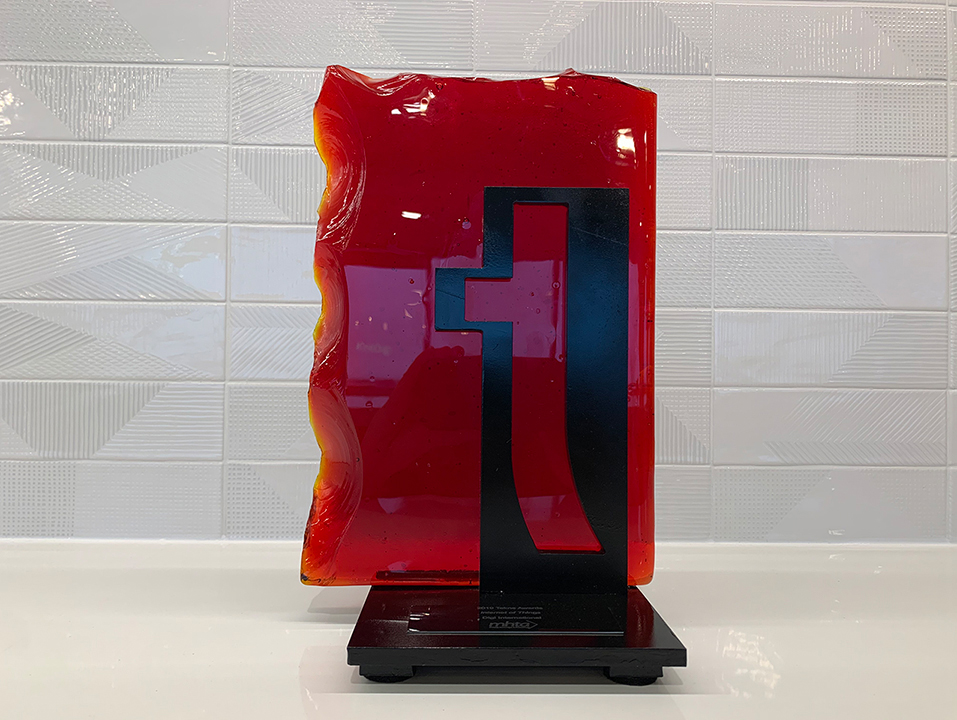
As they say at the awards shows, it’s an honor just to be nominated. But honestly, it’s even nicer to win. At a November, 2019 ceremony in our home state of Minnesota, Digi International won the
2019 Minnesota Tekne Award in the IoT category. This award was presented by the Minnesota High Tech Association (
MHTA) and was shared by Digi developer teams in Hopkins Minnesota, Lindon, Utah and Logrono, Spain. The Digi XBee Tools suite was recognized for helping organizations “simplify development, get to market faster, improve IoT security, and have the ability to monitor and manage deployed devices.”
In 2020, Digi XBee Tools won again, and was named IoT Application Development Platform of the Year in the
8th Annual Compass Intelligence Tech Awards.
Oh, the Places You'll Go!
The design freedom, flexible wireless connectivity and easy-to-add functionality of Digi XBee have made it the #1 choice for embedded wireless connectivity around the world. With more than over 15 million modules deployed, it’s helped eliminate the barriers and complexity of adding wireless connectivity to products while also expanding the possibilities.
But we’re even more excited about what the future holds. As wireless technology and the IoT find new uses every day in industries from agriculture to healthcare to retail, transit, manufacturing and space travel, we’d say the possibilities are limitless.
Resources
Today, we have a rich collection of resources for developers who are preparing to design, test, build, certify and go to market with wireless designs. Here are a few of them to help you get started:
- Digi XBee RF and cellular modules and software: With multiple communications modules to choose from, supporting a range of protocols, as well as software, code libraries, documentation and support, developers have a one-stop shop at Digi for all of their wireless communication needs.
- Digi XBee Tools: Our suite of tools to support your team's entire product lifecycle, from design through building, manufacturing, deploying and managing your deployed product.
- Digi Wireless Design Services: WDS is a team of experts in all aspects of embedded prototyping, development, testing and accelerating a product through certifications to manufacturing for fast time-to-market. They can provide any level of support from consultations to product rescues to complete end-to-end design and build services.
Contact us if we can support your development team in meeting your goals!